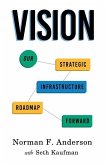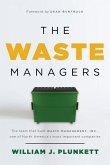Asset management of physical assets is relatively new. A first guideline was published in 2004 (PAS 55) and replaced in 2014 by the ISO 55000. The standard describes well what is needed for an asset management but gives little practical information about how to organize it, where to start, what the critical milestones are, etc. Cost reduction and performance improvements are promised but it is unclear how they are realized. This book does provide that insight. A case study on the development of ProRail, the rail infrastructure manager of the Netherlands, forms the basis. Development started in the 1990s when the rail sector was radically reformed in the Netherlands. The rail infrastructure was split off from the railway company NS and at the same time the engineering office and maintenance company were privatized. Within a few years, a traditional infrastructure manager with four thousand employees transformed into an independent infrastructure manager with eight hundred employees. This book is about the way in which ProRail has built an asset management system step by step. It describes the essence and principles, the organization and required instruments, the results achieved and the influence of the circumstances. It concludes with seven lessons learned.
Hinweis: Dieser Artikel kann nur an eine deutsche Lieferadresse ausgeliefert werden.
Hinweis: Dieser Artikel kann nur an eine deutsche Lieferadresse ausgeliefert werden.








